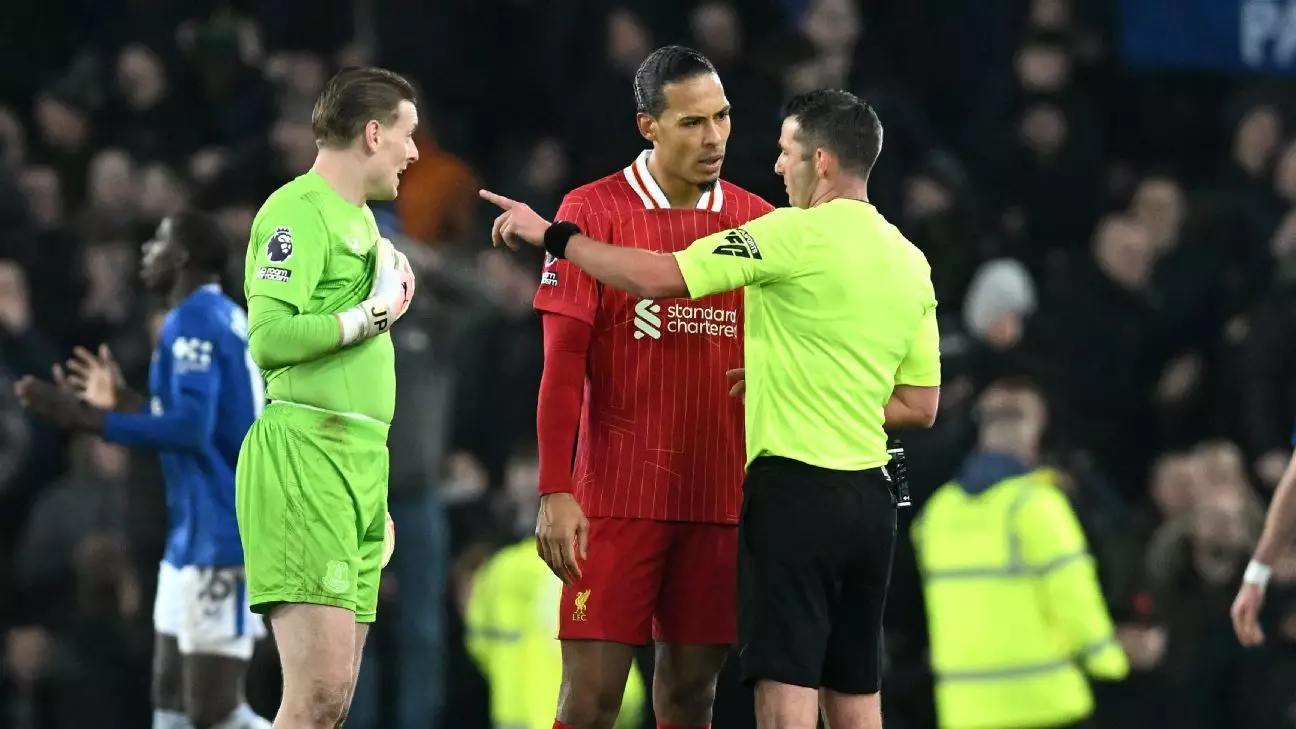The recent Merseyside derby between Liverpool and Everton was more than just a clash of local rivals; it was a tempestuous encounter filled with dramatic twists that exposed the depth of emotions and tensions in football. The match, which ended in a gripping 2-2 draw, was memorable not only for the final scoreline but for the events that unfolded afterward, leading to an unusual number of red cards being issued. It showcased the fine line that referees must walk and brought to light the intense feelings that can erupt in high-stakes matches.
Following the match, Liverpool’s captain Virgil van Dijk expressed his concerns regarding referee Michael Oliver’s management of the game. Van Dijk stated that the referee “lost control” during key moments, particularly during the fracas that erupted post-match. The climax saw Everton’s James Tarkowski delivering a spectacular volley to level the game deep into stoppage time, an act that ignited passions and culminated in chaos. Oliver’s decision to issue multiple red cards, including those of Liverpool’s Curtis Jones and Everton’s Abdoulaye Doucouré, raised questions about the referee’s authority and the overall handling of escalating tensions.
The aftermath of Tarkowski’s goal was a physical confrontation that highlighted the fervor surrounding the derby. Curtis Jones’s confrontation with Doucouré ignited a series of events which saw both benches joining the fray. This incident was not merely about players expressing frustration but reflected a deep-seated rivalry and emotional investment from both sets of supporters. Van Dijk’s comments illustrate the sense of righteousness and protectiveness that players feel towards their fanbase and teammates, demonstrating how closely-knit the team dynamics are in such a charged atmosphere.
Everton’s manager David Moyes offered a contrasting viewpoint, acknowledging the heightened emotions while steering clear of the fighting that ensued. He framed the match as a fitting spectacle worthy of the derby’s history, emphasizing that although the game may not have reached artistic heights, its grit and scrapiness resonate with the tradition of such encounters. Moyes’s perspective hints at the idea that sometimes the raw intensity and unpredictability of the match can overshadow the need for smooth gameplay.
As both teams look to move beyond this emotional encounter, the implications for the season ahead are significant. For Liverpool, the need to maintain focus and composure is crucial if they wish to remain competitive. For Everton, finding ways to mitigate the emotional volatility will be key to performing consistently well. The players and management must process this chaotic experience, learning lessons about control—both on and off the pitch—as they prepare for the matches to come.
This Merseyside derby was a manifestation of football’s emotional landscape, serving as a reminder that while skill and strategy are vital, the heart of the game often lies in its unpredictable moments. It encapsulates not just the rivalry between clubs but the shared passion of fans that can turn a match into a memorable spectacle—both for better and for worse.


Leave a Reply